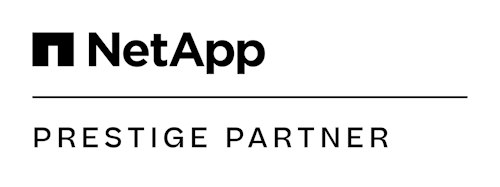NetApp - Object Storage
Manage data growth in your business
The growth of data knows no limits. In particular, unstructured data such as videos, images, voice and sound recordings, streams, measurement and control data (IoT), or connected car data is pushing more and more data centers to their limits. And that is before we even get to the immense growth in end customer data. Changed user behavior due to new devices (e.g., smartphones, tablets, IPTV) mean that more and more data is being generated through cloud service offers (apps).
But many of these enormous data volumes are unstructured, cost time and storage space, and reduce the performance of data centers. The flood of data is therefore driving digitalization, as this will be the only way to manage the huge amount of data in the future. Companies that want to embrace digital change and create the workspace of the future for their employees will have to face up to the problems of storage.
#team-netapp
The solution: object storage
Object storage (also known as object-based storage (OBS)) refers to a storage method that works with “objects.” Unlike block or file storage, the files here are not organized in a hierarchy. Each of these objects is located at a level in a storage pool. What makes object storage special is that it does not need file systems or data blocks, thus also removing the need for a folder structure or mount points. Instead, an ID is assigned that can be used to find the objects.
A “global namespace” allows all storage resources to be managed regardless of their location or the underlying technology. This means that object-based files can be distributed in the cloud or stored in the company’s own data center.
Differences to other storage methods
In file storage, data is stored hierarchically in files and folders. Block storage stores data in data blocks, with multiple blocks being compiled to form a file. By contrast, objects in object storage are bundled files. File and block storage are best suited for data that is accessed frequently, while object storage is best for archiving and storing unstructured data.
One of the benefits: The objects can be addressed directly by applications via HTTP protocol or RESTful APIs. One of the biggest advantages of object storage, however, is its scalability: The storage space can be expanded by adding storage nodes as required. Depending on the solution architecture, users can also simultaneously store objects in multiple nodes, regardless of the cloud or data center in which they are stored anywhere in the world.
NetApp StorageGRID
Surf the data wave with object storage
The amount of unstructured data is growing and putting the brakes on data center performance. Given the billions of files that are expected in the future, directory-based storage formats like NAS are no longer suitable. This calls for a new method of storage. The solution: object storage.
With NetApp StorageGRID, SVA offers a highly scalable, software-defined object storage solution for large archives, media repositories and web data stores. It is even available as Object Storage as a Service (S3aaS).
What makes NetApp StorageGRID special?
With StorageGRID, NetApp delivers a simple and powerful software-defined, object-based storage solution with AWS S3 interface (also known as StorageGRID Webscale up to version 11.2). The main thing that makes NetApp StorageGRID special is its integrated life cycle management policies. It is also possible to create a single namespace across 16 data centers worldwide, offering incredible availability and long data life. Another advantage is the ability to connect workflows in a hybrid cloud in order to make them available using SNS (Amazon Simple Notification Service), Amazon Glacier, Elasticsearch and many others.
NetApp StorageGRID offers excellent compatibility with applications from other providers from every sector imaginable. StorageGRID provides for access via any currently available protocol, such as S3 (Amazon Simple Storage Service) with CIFS, and NFS in connection with application gateways. S3, CIFS and NFS can also be used for end-user computing, while S3 is suitable for hierarchical storage management (HSM) or tiering in the backend.
As the amount of unstructured data to be stored grows, so does the need for an intelligent storage solution to enable simple processing of individual metadata. NetApp StorageGRID is a highly scalable, software-defined object storage solution for large archives, media repositories and web data stores that offers the storage solution of the future through object storage.
SVA Object Storage as a Service (S3aaS)
Object storage offers many benefits for effectively mastering the flood of data. But not every company wants the full package straight away; instead, some wish to use object storage partially for certain areas. Object Storage as a Service now makes this possible.
With Object Storage S3aaS, SVA offers object storage compatible with Amazon S3 for customers to order as a managed cloud service. Object Storage S3aaS is operated on dedicated infrastructure at one of SVA’s data centers in Germany. The managed service can be used with any application that supports the S3 interface and can be accessed directly from the internet. This does away with the necessary investments, as customers need only pay for the services they use.
Object storage S3AAS is suitable for the following areas:
- Scalable solution for storing large quantities of unstructured data (TB to PB)
- Storage of WORM data, compliance archives or other long-term archives
- Provision of cloud storage for applications, e.g., container platforms such as Kubernetes, repositories or modern file-sharing solutions
- AWS S3 storage as the target for backup data from existing backup software such as Veeam, Commvault, TSM, etc. A backup copy job (including media break) similar to a conventional tape out in our data center is also possible.
- Removal of cold data from storage via the AWS S3 interface such as NetApp FabricPool
Your personal consultation – ask us your questions and test our solution for yourself
Do you still have concerns when it comes to security, costs and data volumes? Then why not test object storage with us? See for yourself how secure and efficient this storage format can be. Whether you need a software-defined, object-based storage solution with AWS S3 interface like NetApp StorageGRID, or would prefer to use object storage as S3aaS in certain areas, we provide comprehensive consultation and will answer all your questions. Arrange a non-binding consultation today – simply fill out the contact form and send it to us. We will get in touch quickly and offer you a range of appointments.
Any Questions?
If you would like to know more about this subject, I am happy to assist you.
Contact us

